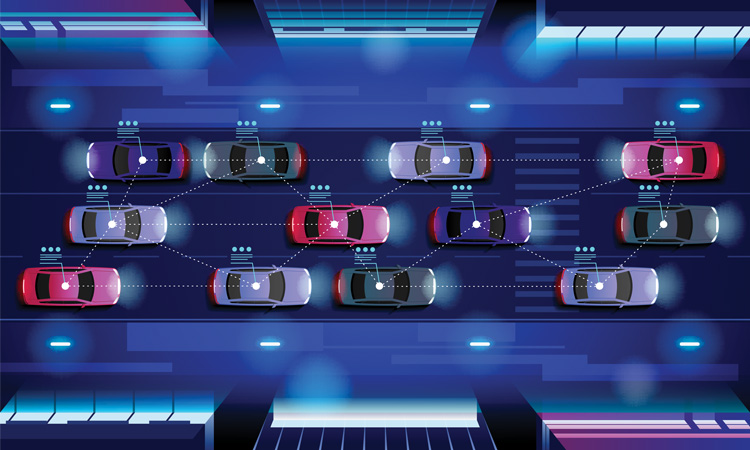Securing the future of mobility for a post-pandemic world
- Like
- Digg
- Del
- Tumblr
- VKontakte
- Buffer
- Love This
- Odnoklassniki
- Meneame
- Blogger
- Amazon
- Yahoo Mail
- Gmail
- AOL
- Newsvine
- HackerNews
- Evernote
- MySpace
- Mail.ru
- Viadeo
- Line
- Comments
- Yummly
- SMS
- Viber
- Telegram
- Subscribe
- Skype
- Facebook Messenger
- Kakao
- LiveJournal
- Yammer
- Edgar
- Fintel
- Mix
- Instapaper
- Copy Link
Posted: 30 June 2020 | Siraj Shaikh - Institute of Future Transport and Cities at Coventry University | No comments yet
Siraj Shaikh, Professor of Systems Security and Director of Research at the Institute of Future Transport and Cities at Coventry University, outlines why cyber-security R&D needs a change of direction to reshape cities for the future.


The coronavirus pandemic has put the future of mobility in the spotlight.
With necessary social distancing practices changing the fundamentals of our daily routines and interactions, the mobility sector has stepped in with valuable solutions to help industries and populations safely navigate the challenging conditions posed by the outbreak.
Now, with Governments around the world desperate to balance public health with the health of their economies, mobility once again has the answer.
Keeping economies moving
Although many countries are starting to reopen their cities for shopping and leisure, public opinion remains sceptical about a return to normal. In Britain, a recent survey of more than 1,000 consumers found that four out of five people would be uncomfortable trying on clothes in a shop, and only a quarter would feel comfortable going out to buy groceries in person.
During the outbreak, we’ve seen the rise of delivery robots on city streets in the UK and the U.S. Offering no-contact deliveries, the technology has helped supermarket retailers respond to unprecedented demand in online services driven by social distancing, and given a lifeline to customers self-isolating or shielding from the virus. With a new era of cautious consumerism likely, these delivery bots could well be the next mobility trend that economies need to keep moving.
Similarly, robotaxis are piquing interest as a future alternative to inner-city travel, because of their physical distancing guarantee and potential to complement public transport services. In fact, initial forecasts estimate the autonomous car and robotaxi market will be worth $2.5 trillion by 2040.
Making cities smarter
Cities especially are under intense scrutiny to establish a ‘new normal’, with a particular focus on how they can become places better equipped to mitigate public health crises and environmental emissions.
The latter was already high on the placemaking agenda but has become more prevalent during the pandemic, with ‘stay at home’ advice leading to reduced travel and fewer emissions as a consequence.
In April, the UK broke its solar generation record because of lower than usual pollution levels. That said, there are already concerning reports that air pollution has returned to pre-pandemic levels in some countries, in tandem with lockdowns being lifted.
Many cities have started a ‘smart’ evolution during the pandemic, testing new technologies such as drones, temperature sensors and real-time data sharing.
Driving this transformation is connected and autonomous mobility (CAM). Research in the UK shows that connected and autonomous vehicles (CAVs) are vital for achieving climate neutrality, and that decarbonising transport will support economic recovery.
Accessing opportunities in this emerging sector has long been a priority for the UK, and was reaffirmed in March this year with the launch of the Department for Transport’s plan for decarbonising transport.
Momentum was building prior to the outbreak, with Nissan Leaf breaking the record for the longest self-driving car journey in the UK and the rollout of large-scale programmes of investment, such as the West Midlands Future Mobility Zone. The region has continued to advance CAM innovation during lockdown, announcing major new testing initiatives like the unique 300km CAV trial route between Birmingham and Coventry.
Taking new directions
These factors combined, now more than ever is the time to accelerate R&D into CAM solutions and grapple with some of the systemic challenges thrown to global transport and logistics.
Yet one area that requires urgent and special attention is system security.
Current evidence suggests that COVID-19-related cyber-attacks in cities soared by 475 per cent from February to March this year. While hospitals and health ministries were the primary targets, clearly transport is another sector open to such risks.
CAVs especially present a number of security concerns. The increased technology needed to power the vehicle systems can make them more vulnerable to third-party security threats.
The potential of such attacks has hit headlines in recent years. We have read how two Tesla vehicles were hacked to autonomously accelerate up to 85mph in a 35mph zone. Another project led by security researchers at Twitter and IOActive saw vehicles remotely hacked through their entertainment systems to reach dashboard functions, steering, brakes and transmission.
These threats have significant implications for road and pedestrian safety, data security, theft and vehicle crime. If these risks are not tackled fast, cities could rebuild their foundations on false hope, undermined by the prospect of CAVs causing more problems than they solve.
Research to date has mostly centred on anticipating threats, hacking systems and proving insecurity. This line of enquiry is important, of course, but it doesn’t get to the root cause of the security issue – that the systems themselves aren’t robust enough from the outset to respond to incoming threats.
To get CAVs ‘road ready’, the scope of research must also focus on system resilience, in this context referring to the readiness of systems to respond and persist in an ever-changing environment.
The urgent demand for this work was recently cemented by an industry-led feasibility study, which found that the UK needs a national road transport cyber-security programme to safely support CAV adoption.
Coventry University’s Systems Security Group at the Institute for Future Transport and Cities (IFTC) is currently leading such investigations, developing best practice for building and integrating resilient systems that can adapt to damaging and disruptive attacks within automotive design and production.
Our researchers are exclusively developing a real-world demonstrator as part of a national consortium of cyber-security experts to provide evidence-driven assessments of how systems react to security threats. The aim is to create benchmarks and guidelines on security and resilience for CAV manufacturers.
The Centre for Connected and Autonomous Automotive Research (CCAAR) – a dedicated partnership between Horiba MIRA and Coventry University – is also making progress, by combining academic analysis with industry insight to establish secure, market-ready solutions.
Adapting for the future
Threats are unpredictable by nature. It would be impossible to prepare for every potential harmful action against an autonomous system, and equally impossible to design security issues out of CAVs completely.
The answer, therefore, is to ensure that the systems used in connected and intelligent vehicles are ready to handle any threats sent their way.
The post-pandemic world will come to rely on mobility like never before, and will no doubt bring with it a fresh set of security challenges for the sector. Just like the autonomous systems in our vehicles, industry and academia must adapt to growing demand and work together to develop resilient solutions that, in turn, can create forward-looking cities ready for the future.
Biography


Siraj has been involved in research, development and evaluation of large-scale distributed secure systems for over twenty years. His doctoral and post-doctoral research involved design and verification of security and safety-critical systems.







